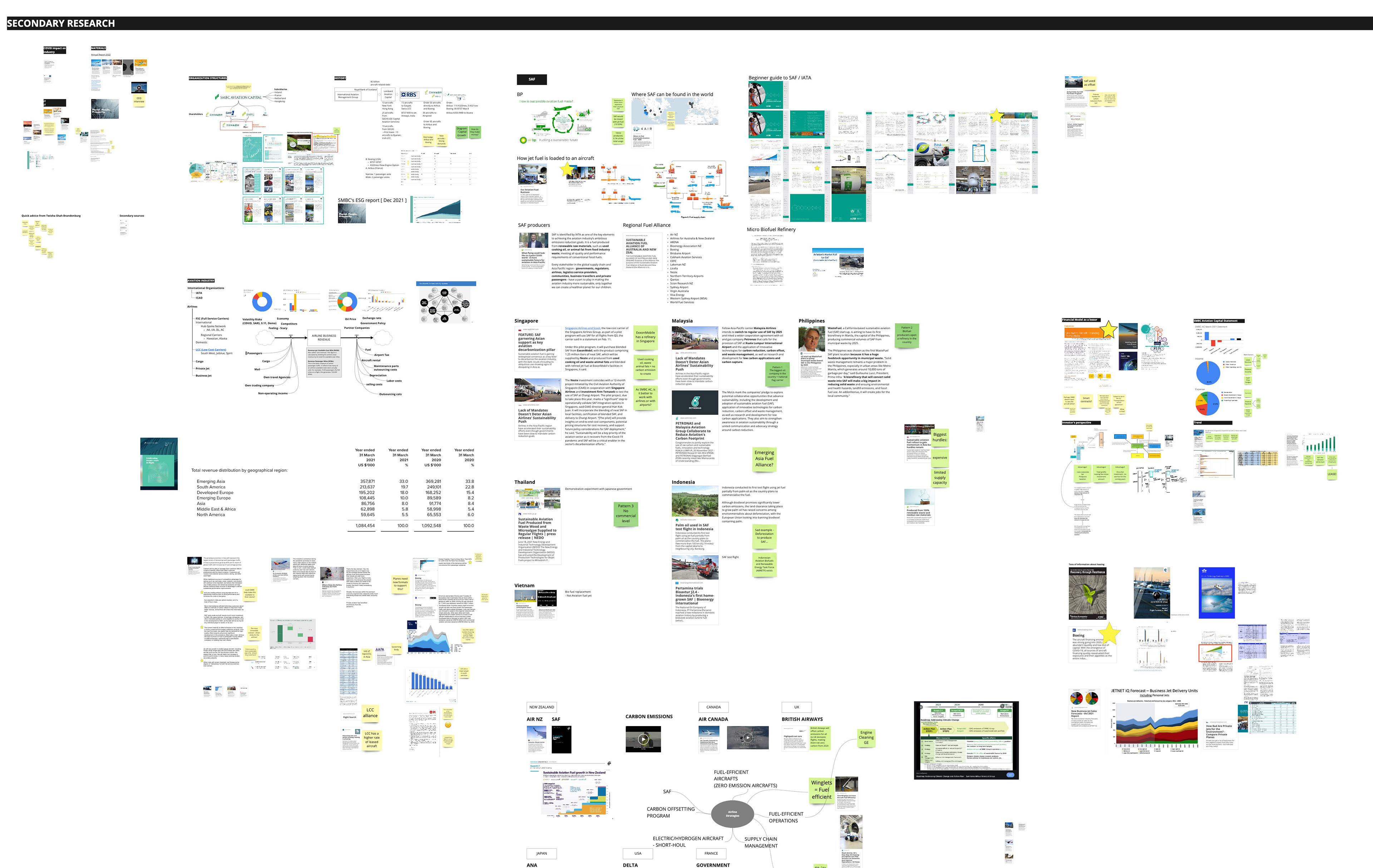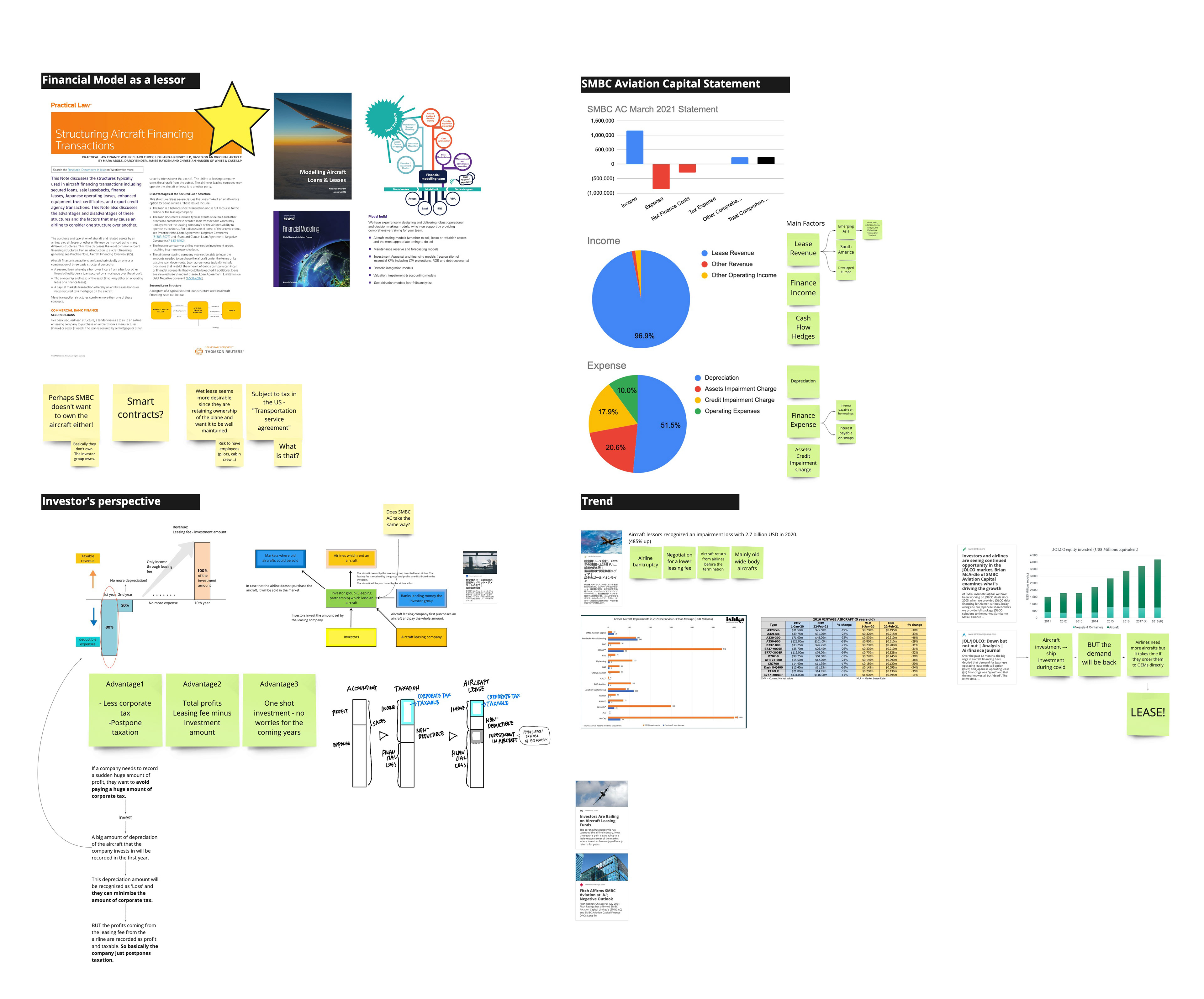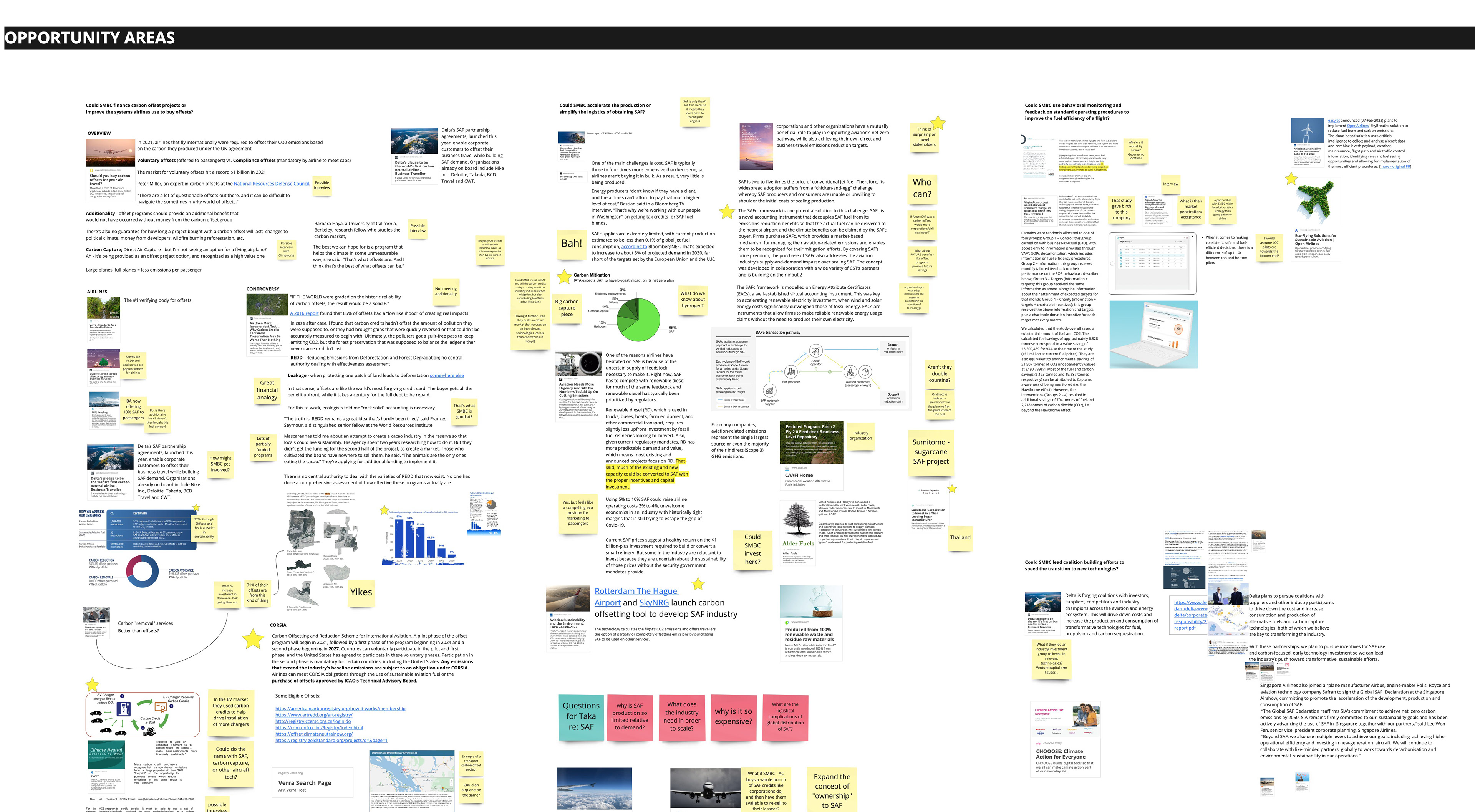What is it: Annual Rotman Design Challenge (RDC) put together by the Rotman School of Management at the University of Toronto. Participating schools this year included teams from Parsons School of Design, Rotman School of Management, University of Cambridge and more.
Winner of the RDC, honoree of Fast Company's Innovation by Design award
Sponsor: SMBC Aviation Capital
The challenge: How might SMBC Aviation Capital, a leading global aircraft lessor, re-design its current business model so that it may continue to thrive while also accelerating the decarbonization of the aviation industry.
Impact: In September 2022, SMBC AC launched their high quality carbon credit program to help airlines meet their sustainability commitments.
Team members: Simon Dunne, Aman Bhardwaj, Takayuki Kato
Time frame: 5 weeks, Jan-Feb 2022
My role: researcher, ideator, integrator, designer, financial estimator
Tap the image below to view our complete presentation:
Our design process:
1. Preliminary secondary research
2. Research planning + subject matter expert (SME) interviews
3. Analysis and synthesis + reframing the problem
4. Proposed solution + storytelling
5. Prototyping
1. Preliminary secondary research
We did a very extensive initial secondary research on the airline and the airline leasing industry, because all of us (except our teammate Taka) were very foreign to the industry. With very little given information, we looked for everything from the SMBC-AC company structure to how carbon offset in the airline industry worked. Our team had regular share outs on what we learned from our individual research.




2. Research planning + 8 subject matter expert (SME) interviews
Doing the secondary research helped us highlight some interesting areas where we wanted to dig deeper into, as well as helped us refine our research plan and interview guides. We interviewed 8 subject matter experts from the airline and climate consultancy industries to gain a better understanding on how an airline leasing company could play a role in decarbonizing the aviation industry.
Our preliminary research plan, interview guides, interview notes, and interview data
3. Analysis and synthesis + reframing the problem
The really challenging part about this project was the fact that SMBC-AC is in the business of airline leasing. It is neither an airline, nor an aircraft manufacturer. While there are currently many more ways that the airlines and aircraft manufacturers can directly decarbonize, there are a lot more constraints and limitations on what an airline lessor can actually do.
Some of the interesting insights worth highlighting:
- Low cost carriers (LCCs) lease 60% of their aircrafts
- 82% of industry growth will come from LCCs in the next five years
- In 2027, CORSIA will begin mandating payment for additional carbon footprint
- Low cost carriers have less financial means and other necessary resources to decarbonize
- SMBC-AC already leases out a majority of their aircrafts to LCCs
Design Principles:
Start now.
Provide equal access.
Prioritize low-cost solutions
Reframing of the problem:
How might we cement ourselves as a critical partner of the low cost carrier for an uncertain future while helping them meet their decarbonization needs today?
4. Proposed Solution + Storytelling
Storytelling:
Storytelling and iterating on the narratives
Proposed Solution:
Solution Implementation Roadmap: Consortium -> Low Carb Fund -> DiversiFly Beta
Next steps:
Work with SMBC-AC to take the necessary steps to initiate on creating the Consortium.
Prototype the Low Carb Fund platform and test it on potential users. Iterate on the prototype.
Prototype Diversifly further and get feedback from potential users. Iterate on the prototype.
Ask for more critiques from faculty and peers.
Key learnings:
Great ideas cannot survive without good communication and compelling storytelling.
There's a fine balance between being extensive enough with our research and recognizing where to the zoom in and choose the important and relevant data from other distracting ones.
Healthy debates are essential in a team so we can sharpen each other's thinking and ideas.
Having the flexibility to pivot as needed is really important.
More rigorous research planning in the beginning of our research and following through with our timeline could really help our process. If we had more time, we could code and extract more insights from our interviews with SMEs.